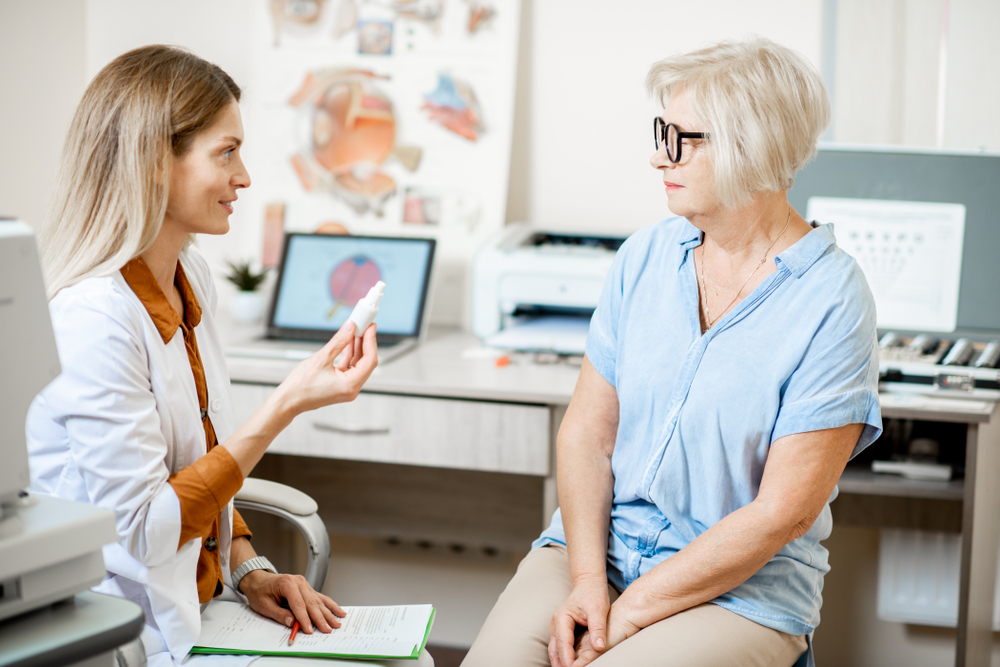5 Ways Doctors Treat Dry Eye
Are you suffering from chronic dry eye? Do you want to learn more about treatments that could help you find relief?
While dry eye symptoms can be frustrating, the condition is highly treatable. Doctors have developed many effective medications, therapies, practices, and procedures designed to treat dry eye syndrome from mild to severe.
Keep reading to learn more about 5 ways doctors treat dry eye.
What is Dry Eye?
Dry eye, or dry eye syndrome, is a condition that disrupts the tear film of your eyes. Your eyes may not be producing enough tears to stay lubricated, or the tears they are making may be poor in quality and evaporate too quickly.
This can lead to aggravating symptoms, such as:
- Dry eyes
- Overly watery eyes
- Burning and stinging
- Blurry vision
- Enhanced light sensitivity
- Excessive mucus in or around the eyes
- Red, irritated eyes
- Trouble wearing contact lenses
Who is at Risk for Dry Eye?
Although anyone can develop dry eye, certain risk factors can increase your chances, including:
- Old age, as risk increases the older you get
- Being a woman, especially if you have gone through menopause
- Eye conditions like entropion, ectropion, or blepharitis
- Exposure to irritants like smoke, wind, or dry air
- Taking certain medications, such as antidepressants, antihistamines, and diuretics
- Having a refractive procedure like LASIK
- Wearing contact lenses
- Spending extended periods reading or looking at screens
- Certain autoimmune conditions like lupus and rheumatoid arthritis
Your doctor at Mid Ohio Eye will review your medical history and risk factors with you and perform comprehensive exams to properly diagnose your dry eye.
How Do Doctors Treat Dry Eye?
The best treatment for your dry eye will depend on its severity and root cause. Five ways doctors can treat dry eye include:
1. Lifestyle Adjustments
Certain lifestyle adjustments can help patients with dry eye, such as using a humidifier in dry spaces, avoiding environmental triggers like smoke and allergens, using a warm compress over the eyes, or increasing the amount of omega-3 fatty acids in your diet. Your doctor may also recommend following the 20-20-20 rule, especially if you spend a lot of time working on a computer.
It involves stopping every 20 minutes to focus on something 20 feet away for 20 seconds at a time to give your eyes a break.
2. Artificial Tears
Your doctor may recommend using artificial tears, an over-the-counter treatment you can get at the pharmacy. They can help lubricate your eyes and temporarily relieve symptoms.
3. Prescription Medications
There are various medications your doctor may prescribe to help relieve your symptoms if they are not responding to lifestyle changes and artificial tears. Prescription eye drops can help lower inflammation in your tear glands, helping them produce higher-quality tears.
They may also prescribe an ointment or oral antibiotic in instances where there is significant eyelid inflammation.
4. Punctal Plugs
Punctal plugs can be used to prevent tears from draining out of your eyes. Your doctor can insert temporary or permanent plugs into the tear drain of your lower eyelid in a painless procedure.
If the plugs are temporary, they will dissolve quickly, whereas permanent plugs can stay in your tear drain for extended periods of time.
5. Scleral Lenses
Your doctor at Mid Ohio Eye may recommend the Boston scleral lens if your symptoms are more severe. They are therapeutic contact lenses that can protect and lubricate your eyes and correct nearsightedness, farsightedness, and astigmatism.
When you attend an eye exam at Mid Ohio Eye, your doctor can examine your eyes, review your symptoms, and determine the best treatment plan for you. Then, you can start living your life again without being held back by dry eye syndrome.
Do you want to learn more about finding relief from dry eye? Schedule an appointment at Mid Ohio Eye in Colombus, OH, today!










